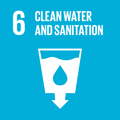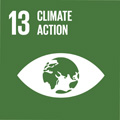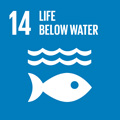- Docente: Elena Fabbri
- Credits: 6
- SSD: BIO/09
- Language: Italian
- Moduli: Elena Fabbri (Modulo 1) Paola Valbonesi (Modulo 2)
- Teaching Mode: In-person learning (entirely or partially) (Modulo 1); In-person learning (entirely or partially) (Modulo 2)
- Campus: Ravenna
- Corso: Second cycle degree programme (LM) in Environmental Assessment and Management (cod. 8418)
Learning outcomes
At the end of the teaching period, the student has aquired knowledge on the animal-environment interaction and theoretical and practical knowledge useful to measure and foresee the effects of anthropic activities on living organism at the molecular, cellular and individual levels. On these basis, the student is able to apply assessment of environmental quality and use data for risk evaluation.
Course contents
Principles of organism-environment interaction; emerging contaminants (endocrine disruptors, pharmaceuticals, plastics); main effects of contaminants on humans and wildlife. Action mechanisms at different levels of biological complexity (molecular, cellular and organism levels); effects and action mechanisms of endocrine disruptors; contaminant effects on main physiological functions. The biomarkers as early warnings of environmental quality alteration. Environmental biomonitoring according to international guidelines.
Readings/Bibliography
Scientific papers, report andinternational guidelines on the application and improvements ofstrategies forenvironmental biomonitoring and environmental and health risk evaluation
Teaching methods
Frontal lessons and discussion of scientific papers.
Assessment methods
The final examination wants to evaluate that students met the teaching objectives: organism-environment interaction; environmental contamination; main effects of contaminants on humans and wildlife; action mechanisms at different levels of biological complexity; effects of endocrine disruptors; contaminant effects on main physiological functions. Environmental biomonitoring. Evaluation of health and environmental risk.
The exam (written) deals with three specific questions on different topics: students will be asked to answer a general question in a pertinent and synthetic manner; a second question will be on the practical activities in the laboratory; a third question will be on planning an environmental bioassessment or biomonitoring action.
Teaching tools
Power point slides, scientific papers
Office hours
See the website of Elena Fabbri
See the website of Paola Valbonesi
SDGs




This teaching activity contributes to the achievement of the Sustainable Development Goals of the UN 2030 Agenda.
